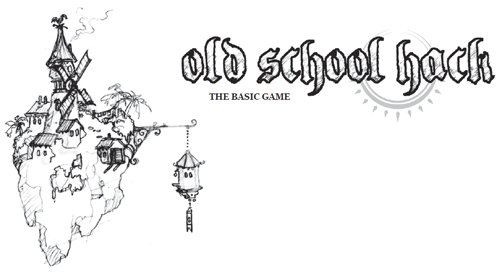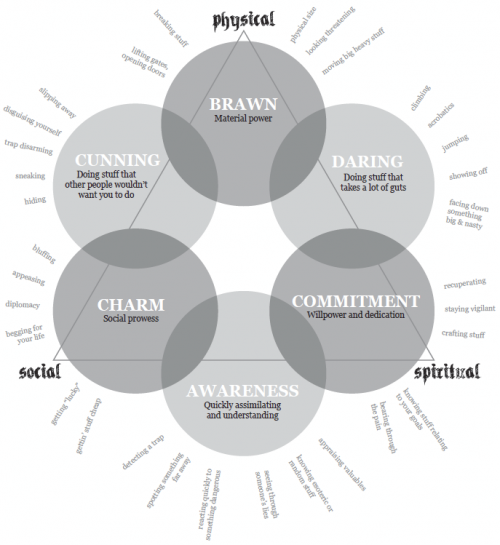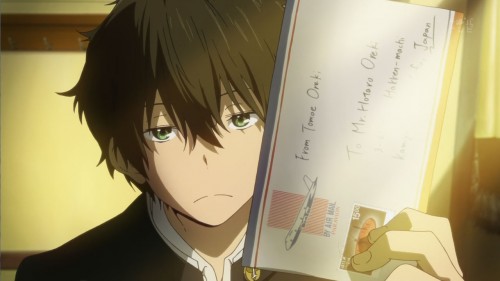
This past week was the beginning of my oldest son’s post-1st-grade summer vacation, so I figured it was high time to expose the lad to Dungeons & Dragons. I didn’t have my 4th Edition handy, so we busted out the 3.5 Player’s Handbook and whipped up a paladin. His choice. He went off on a grand little adventure, and had just earned enough experience points for third level (I only let people level up when they have some downtime) when a particularly-lucky goblin cut short his adventuring career. Rather than go through all the paperwork of making another D&D character, a task that stretches the limits of a six-year-old’s attention span, we gave a new system a try.
Old School Hack is a free-to-download rules-light system that encourages fairly free-form play, is explicitly geared towards low-preptime scenarios, uses only two types of dice, and weighs in at a whopping 26 pages. Character generation is a breeze. Roll 2d10 six times to get your stats (which don’t have a direct bearing on your ability to whack a mace upside an orc’s head), pick a class ability, select a general type of weapon (my boy’s Thief has a “reach weapon,” which could be any number of things but we say it’s a spear), select a general type of armor (four choices, nothing complicated), decide whether you have a shield, figure out why you’re adventuring to start with, and roll a die or two for starting wealth and off you go. Each character class has a highly-reasonable list of starting equipment, a selection of four class abilities that you can pick up as you advance in levels, everything you need.
Play is simple, with an order of events spelled out cleanly between six types of things you can do, and which takes precedence over which. Attacks are 2d10, with one die being designated the “face die;” if the face die shows a 10 and the total was good enough to hit the target, you hit him right in his stupid face. Take that, bad guy! No need to roll for damage, most things do 1 damage on a hit. Why sweat that stuff? When you make up a bad-guy the hit-points you give him (or whatever metaphor your game uses) are really just there to rough out how many hits from the player-characters the thing can withstand. There isn’t even a big list of monsters’ stats. Just determine if it’s a minion, a guard, a big bad-guy/villain, or a really big monster. No problem.
There’s no getting bogged down in foot-by-foot movement rules, it has an “arena”-based scene setup that reminds me of FATE’s zone system. One of the six things you can do is move from one arena to a neighboring one. Another is to impede somebody from doing just that. This makes for plenty of tactical movement for your actual at-table needs unless you’re seriously itching from from miniatures tactical skirmishing. In which case there are lots of tactical miniatures combat games out there to slake your thirsts.
Player advancement is handled as a side-effect of the “awesome points” game mechanic, by which players reward each other for outstanding play. If you see another player doing something awesome, grab a token and give it to him. These tokens represent awesome points, and you can spent them back into the collective pool to improve your rolls, temporarily get new abilities, and mitigate damage taken. Once you’ve earned and spent twelve awesome points, you can go up a level. There’s only four levels, so this isn’t the game for you if you want to run a multiple-year epic tale. Your characters start out highly competent, and can end up somewhat awesome.
Your character’s main stats (which have cool names like Brawn and Cunning and Daring) aren’t directly used for attack and defense. Instead you use them for the wide variety of non-attacky, non-defendy actions you might take. They even have a convenient diagram to give players and DMs a good idea of what to use for what:

If you find yourself needing to run a pick-up game from time to time, Old School Hack is a great tool to keep at your disposal. The price is right (a free PDF), so you’ve got nothing to lose but a little bandwidth and some time.


